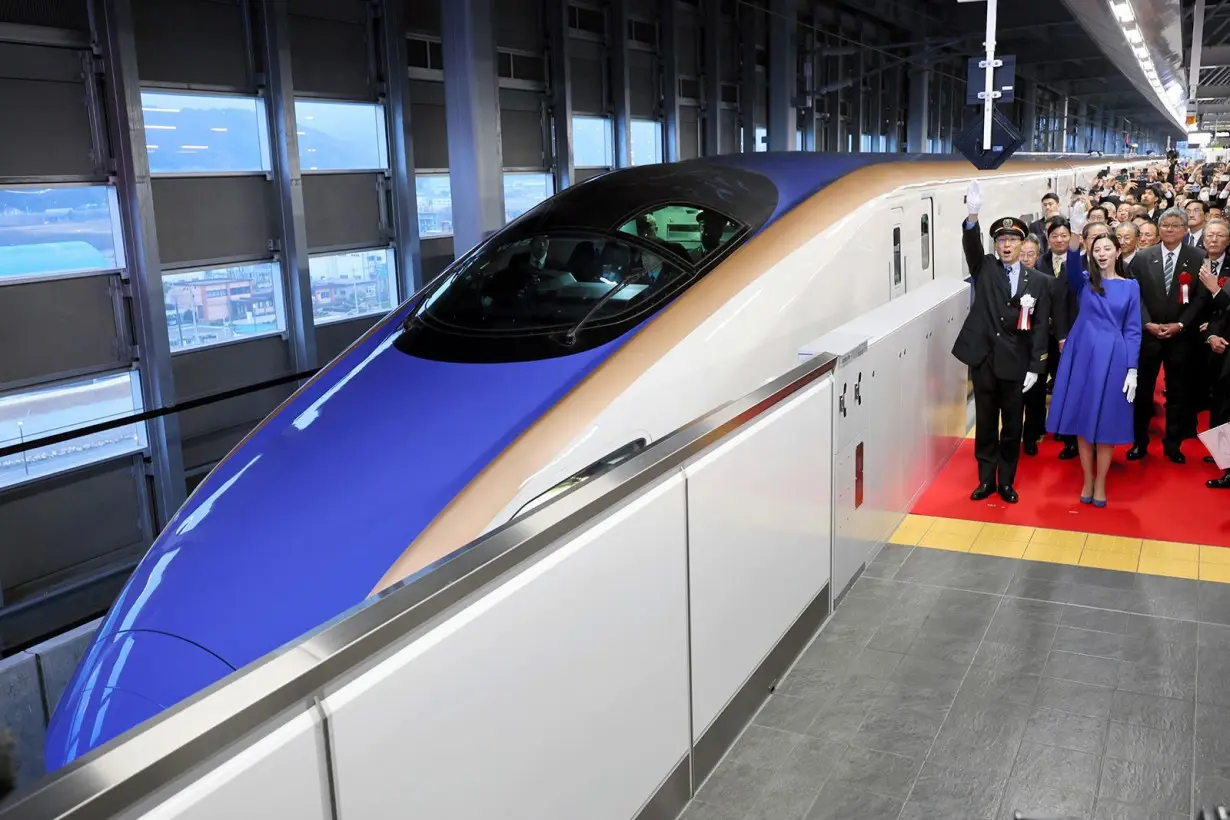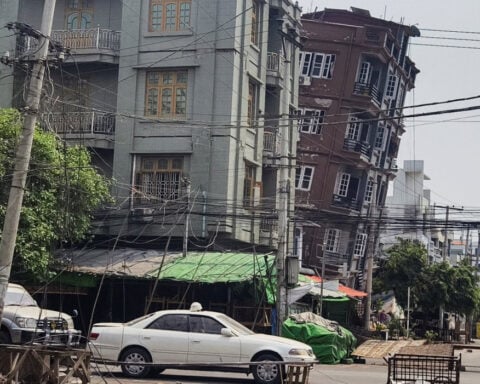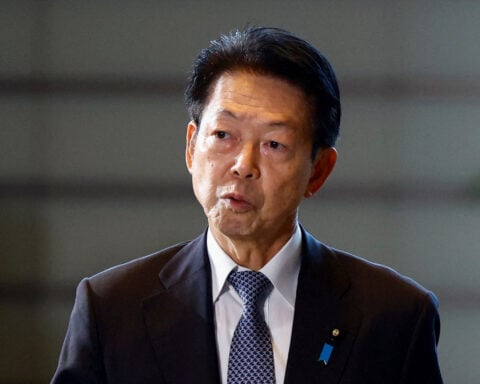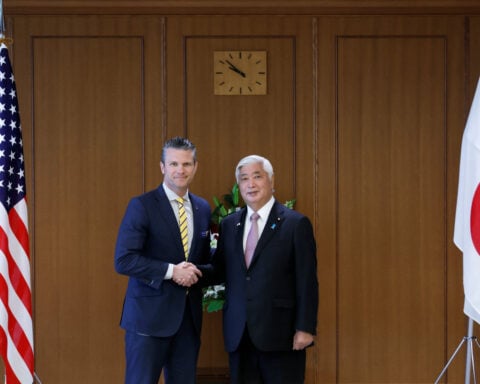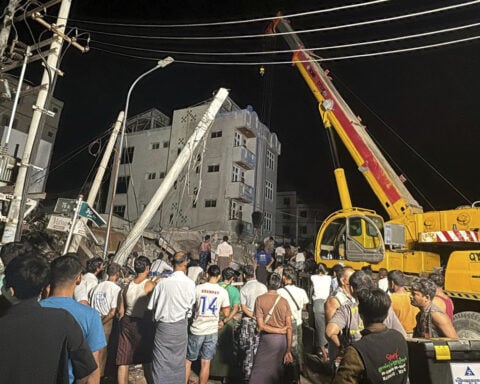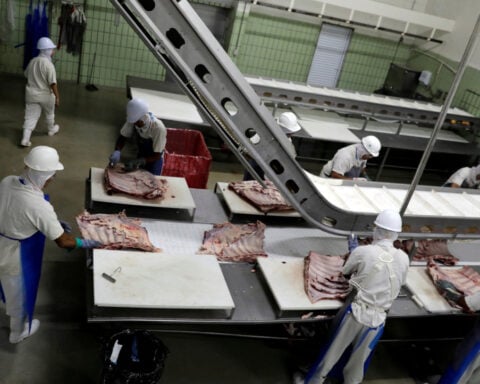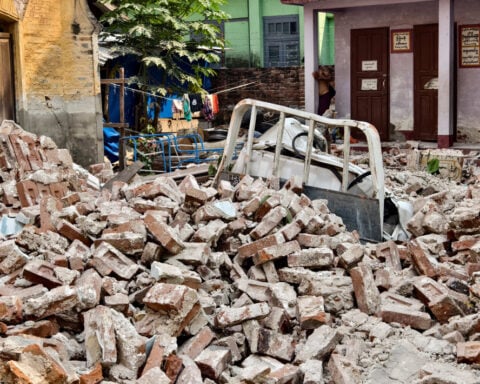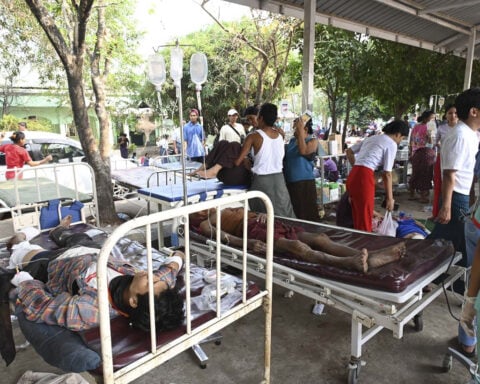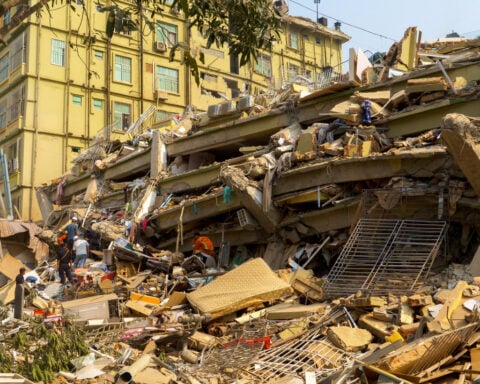(CNN) — Japan is famed for its skilled artisans, masters who maintain a commitment to tradition while modernizing production techniques in line with the development of new materials and processes.
Many places in the country have grown famous by focusing on specific crafts, from exquisite kimonos to perfectly designed knives. Among them is the small city of Sabae, in Fukui prefecture, about a 3.5-hour train ride from Tokyo.
It’s widely known as Japan’s eyeglasses capital – and for good reason. Sabae produces over 90% of the frames manufactured in the country, according to the local government. Signs and objects shaped like eyeglasses can be found on city streets, and there’s even a museum and festival devoted to spectacles.
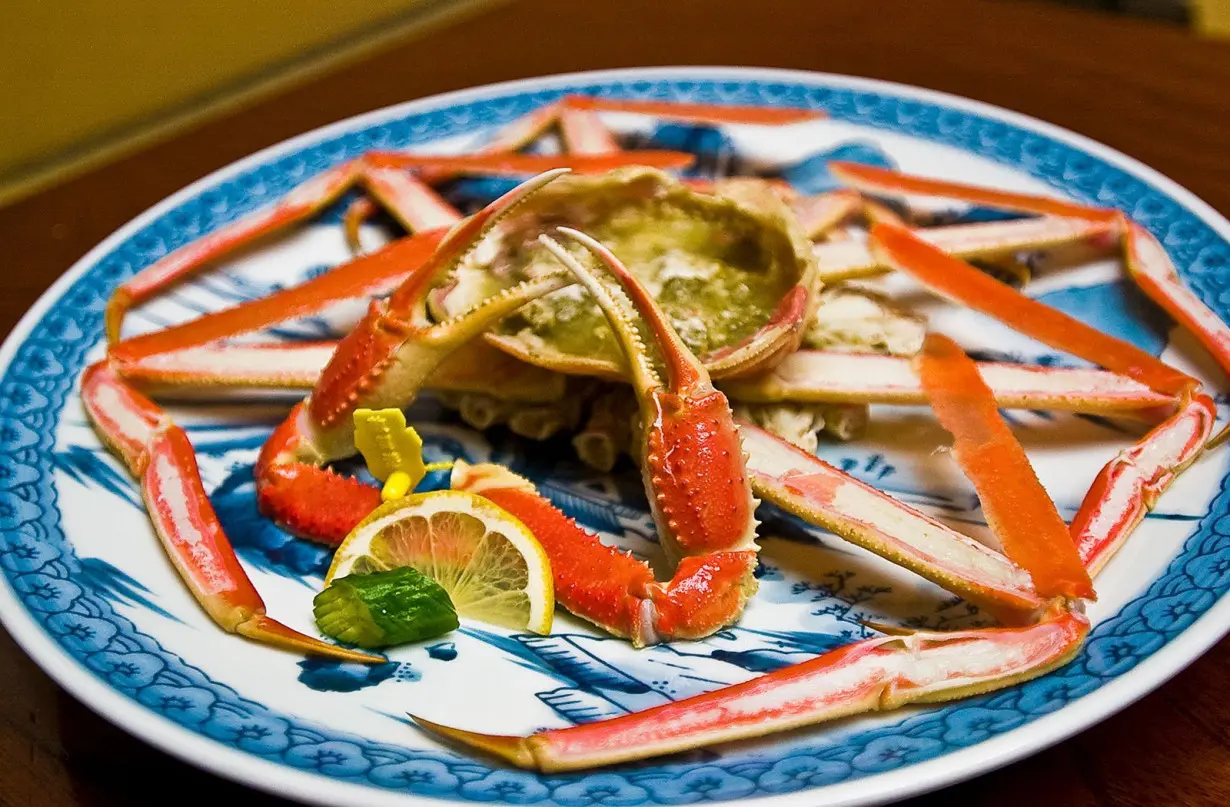
The art of making spectacles
Sabae, located on Japan’s main Honshu island near the city of Fukui, has been producing quality eyewear for more than a century.
It all started in 1905, when a local government official invited skilled eyeglasses artisans to come to the city to teach their craft, an attempt to create new opportunities for local farmers.
The move paid off. Today, Sabae has over 100 companies that collaborate to make pairs of glasses.
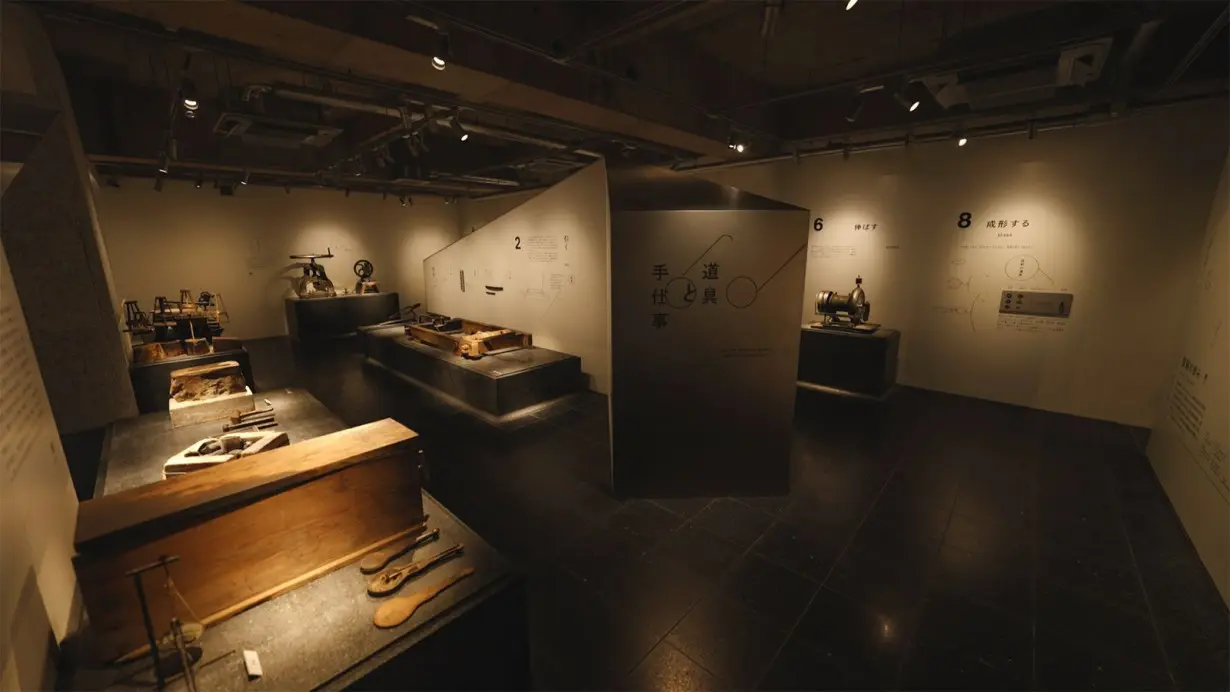
Though these studios use cutting-edge machinery to produce new frames made of metal and acetate, most stages still require the skilled hands and trained eyes of Sabae’s master artisans.
That includes Takeshi Yamae, a frame designer with Japanese brand Boston Club who has lived in the city for 17 years. He tells CNN one pair of glasses can involve more than 200 steps.
“I first design it, sketch it, then put it into my computer,” he says. “From the time I start designing, to the time I have the perfect product, it takes more than a year.”
The designer says he enjoys using new materials, like carbon, but doesn’t follow trends given how long it takes to produce new frames. Instead, he prefers to look to the future.
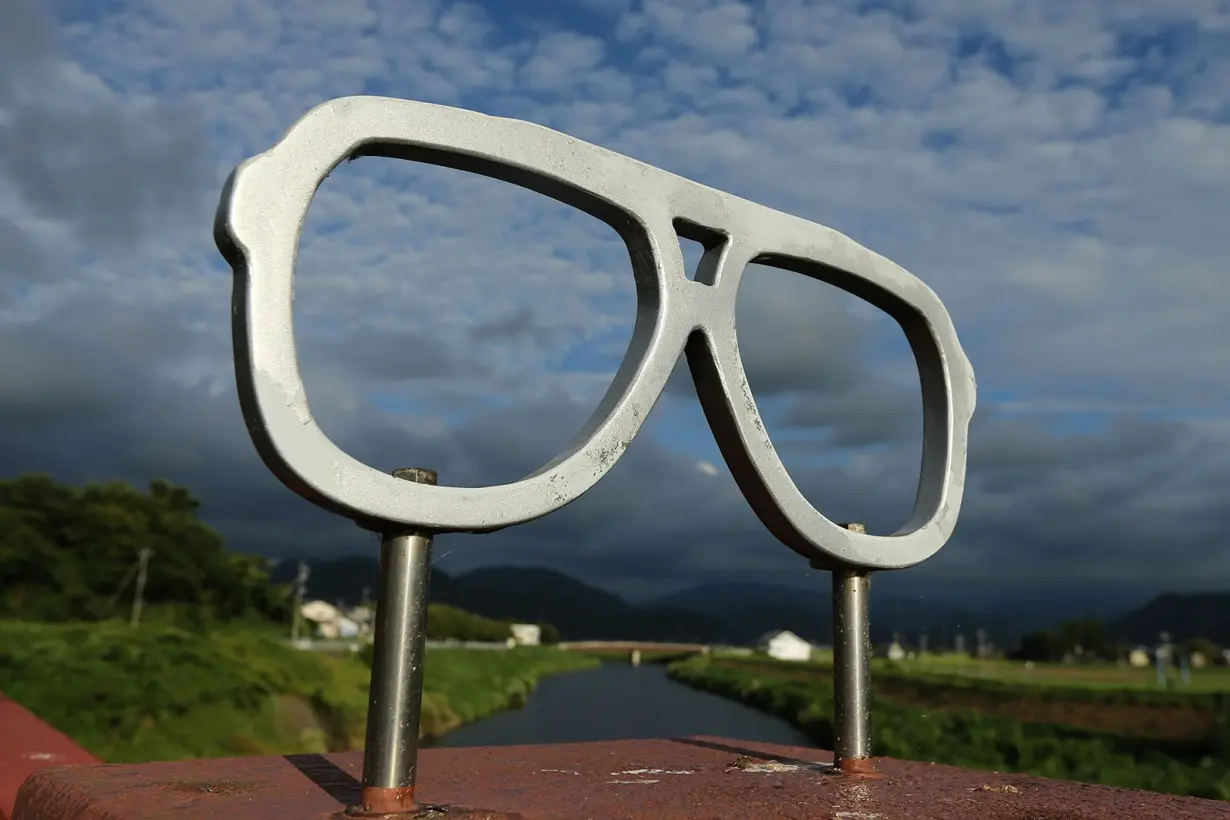
“I start by thinking about who I want to wear it,” he says. “I often get inspiration from very Japanese things, for example, houses, gardens and tableware.”
Though Sabae-made frames can be found all over Japan, there’s something special about visiting the city and witnessing the process up close.
Some of the craftspeople involved in the frame manufacturing process dedicate their entire careers to just one skill, such as machine-cutting, polishing or attaching the nose pads.
“Everyone in factories in Sabae wants to make beautiful, high-quality products that can be used around the world and that you can tell at a glance are Sabae glasses,” says Takeshi.
Sabae’s Megane Museum (“Glasses Museum”), which sits on Megane Street, has displays highlighting the dozens of steps involved in making the perfect pair of spectacles and hosts various events dedicated to the art of eyeglasses. Eyewear brands, including Boston Club, are often invited to showcase their designs in popup shops.
The museum also offers workshops for those who want to make their own frames – the perfect souvenir. (Visitors need to book in advance.) Those short on time can just visit the onsite shop, which has thousands of frames made by about 50 different Fukui prefecture manufacturers.
Looking beyond the spectacles
Fukui is one of four prefectures in Japan’s Hokuriku region, along with Toyama, Niigata and Ishikawa.
It’s now easier than ever to visit this less-traveled part of Japan thanks to a new shinkansen (bullet train) extension that opened earlier this year, connecting even more of the region with Tokyo.
The 2024 extension, ending at Tsuruga Station in Fukui, adds 125 kilometers (78 miles) of track and offers a wealth of new travel opportunities for international visitors looking to escape the tourist crowds in places like Tokyo and Kyoto.
Fukui prefecture has four stations on the extended Shinkansen line – Awara Onsen Station, Fukui Station, Echizen-Takefu Station and Tsuruga Station. (Travelers can hop on a separate train from Fukui Station for the 15-minute ride to Sabae.)
In addition to being home to the eyeglasses capital of Japan, Fukui prefecture is filled with well-preserved ancient architecture, historic sites and temples, as well as newer attractions, including Nishiyama Zoo, famed for its red pandas.
There’s also the Fukui Prefectural Dinosaur Museum, which recently underwent a major expansion and houses one of Asia’s largest dinosaur collections. It has 50 complete dino skeletons, including a rare Brachylophosaurus mummy fossil.
For sakura seekers, Asuwa River, which runs through the city of Fukui, is lined with a two-kilometer stretch of cherry blossom trees that flower every spring.
The city is also a good base for those who want to visit Maruoka Castle Park, one of 12 remaining castle towers in Japan, as well as Eihei-ji, one of two head Soto Zen Buddhist temples.
In terms of natural attractions away from urban centers, you’re not going to want to forget your spectacles. There’s a lot to see.
Fukui prefecture highlights include the rugged cliffside rock formations at Tojinbo as well as the scenic Mikata Goko (Five Lakes of Mikata) and accompanying Rainbow Line – an 11-kilometer (seven-mile) road offering views of the lakes – in Wakasa Bay Quasi-National Park near Tsuruga Station.
Food is also a highlight of any Fukui visit. The prefecture is a major rice producer as well as a seafood port, making it a great destination for sushi lovers. Its Echizen gani crabs – male snow crabs that stretch as long as 80 centimeters (31 inches) – are a particularly popular draw. In season from November to March, they get their name from the coastline that’s famous for them – Echizen.
Tourists keen to learn more about the area’s crab fishing history can check out the seaside Echizen Crab Museum.
The-CNN-Wire
™ & © 2024 Cable News Network, Inc., a Warner Bros. Discovery Company. All rights reserved.

 Trump has begun another trade war. Here's a timeline of how we got here
Trump has begun another trade war. Here's a timeline of how we got here
 Canada's leader laments lost friendship with US in town that sheltered stranded Americans after 9/11
Canada's leader laments lost friendship with US in town that sheltered stranded Americans after 9/11
 Chinese EV giant BYD's fourth-quarter profit leaps 73%
Chinese EV giant BYD's fourth-quarter profit leaps 73%
 You're an American in another land? Prepare to talk about the why and how of Trump 2.0
You're an American in another land? Prepare to talk about the why and how of Trump 2.0
 Chalk talk: Star power, top teams and No. 5 seeds headline the women's March Madness Sweet 16
Chalk talk: Star power, top teams and No. 5 seeds headline the women's March Madness Sweet 16
 Purdue returns to Sweet 16 with 76-62 win over McNeese in March Madness
Purdue returns to Sweet 16 with 76-62 win over McNeese in March Madness
